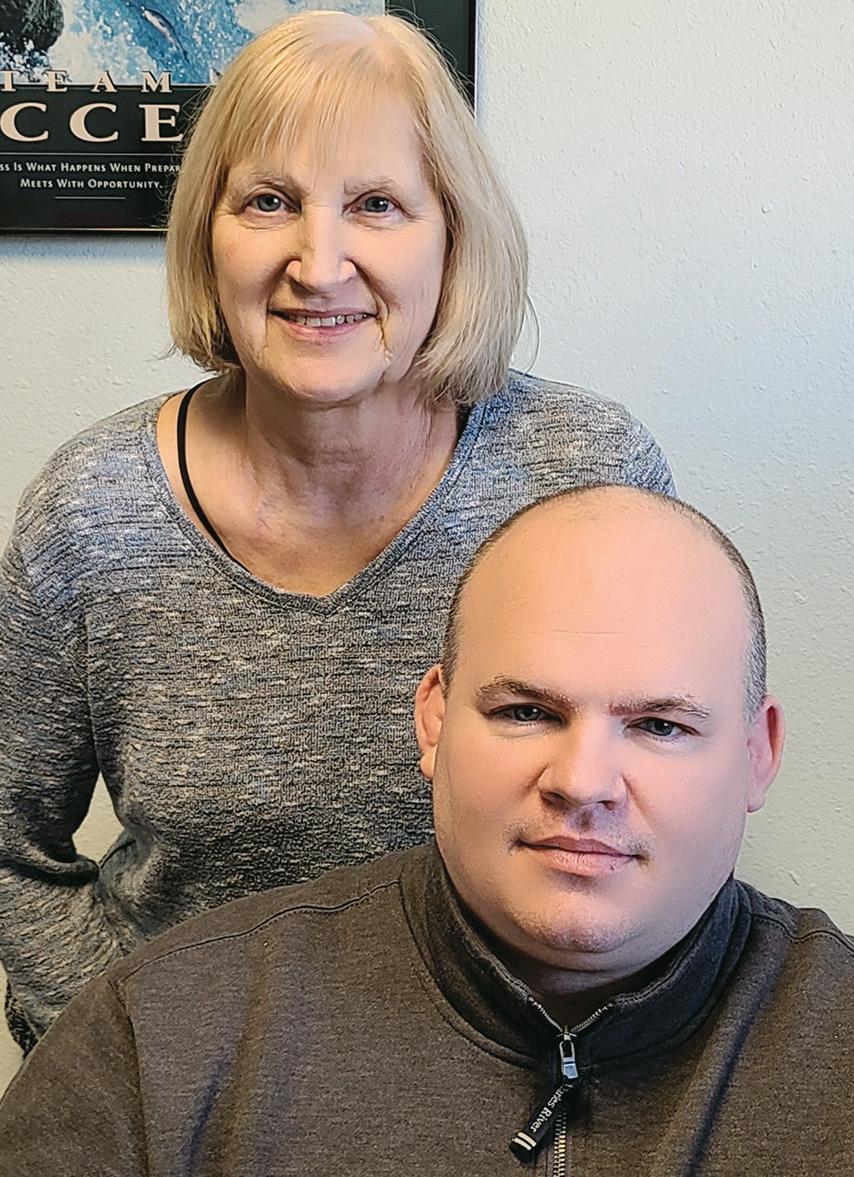living SENIOR
STAY ACTIVE IN RETIREMENT TYPES OF ARTHRITIS
OUTSTANDING SENIORS


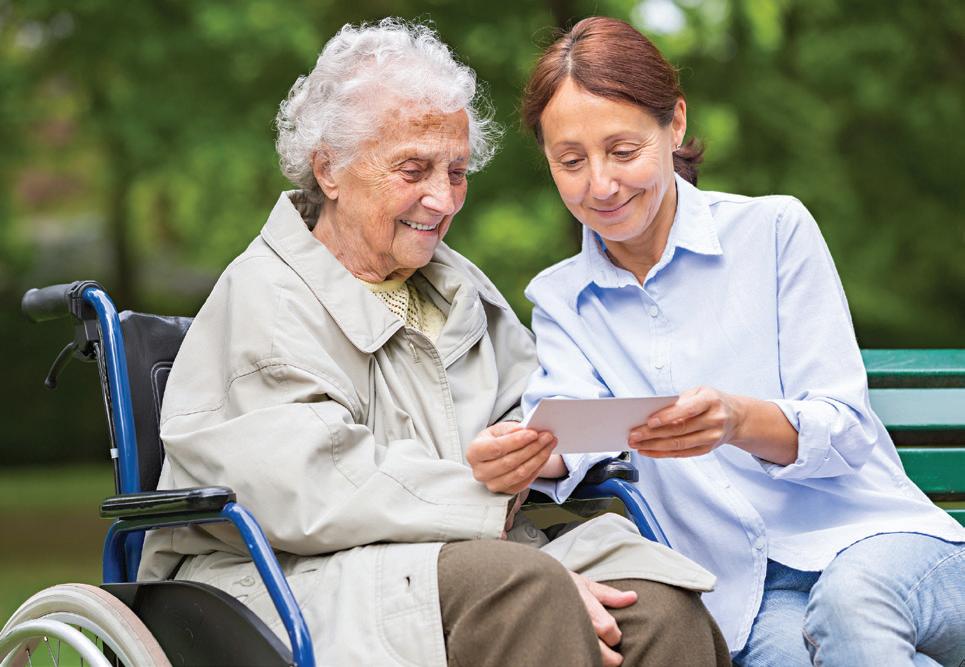




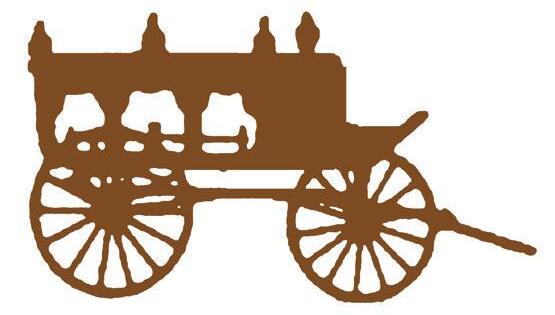









Many people look forward to their retirement for years. However, once it begins, they may find all the newfound free time overwhelming.
If you’re planning on retiring soon, having a plan for how you’ll spend your time is important for your health and happiness. Here are five ideas for staying mentally and physically active, as well as engaged in your community:
Host a morning walking group in your neighborhood or on an area trail. A brisk morning walk is a low-impact way to get in shape and keep your heart healthy. Plus, the fresh air and camaraderie is good for your mental wellbeing.

To ensure the group’s success, keep meetup times consistent and let participants know in advance the pace and distance you plan to walk. You may even want to start a fun tradition, such as ending every stroll session at a local coffee shop.
Consider taking an online course on how to do taxes and become a resource for friends during tax season. Get prepared by visiting the IRS site, which provides information on tax return preparer credentials and qualifications, as well as details about how this year’s tax laws have changed and how they’ll impact deductions.
Equip yourself with a good printing calculator, such as the HR-170 from Casio,
which features two-color printing and cost/ sell/margin functionality.
The calculator allows you to check and correct up to 150 steps and print your calculations after correction so you can maintain accuracy. Plus, its clock and calendar features will help you stay organized.
Many recent immigrants need logistical help getting situated in the United States. If you speak a foreign language, consider volunteering through your local library or community center. Become a literacy buddy to your new neighbors or help them complete essential paperwork, such as job applications and school enrollment forms.
It’s never too late to begin your music education. Whether you’re learning to play the piano for the first time or revisiting an old passion, new tools will allow you to hone your skills independently and effectively.
Check out Casiotone keyboards, which are portable and well-suited for any level of play, as most of the models have features that will guide you through its built-in songs by either a key-lighting system or an on-screen step-by-step process.
With the ability to slow the tempo to aid in practice or learn melodies individually by selecting left-hand or right-hand parts only, you can quickly master favorite tunes and build your musical confidence.
Are there classic books you’ve always wanted to read but have never gotten around to? Use your abundance of free time to finally make your way through your literary bucket list. Whether it’s “Moby Dick” or “Ulysses,” consider inviting friends to participate. Challenging titles will be more easily and enjoyably tackled with friends and a discussion schedule.
EDITOR IN CHIEF: Heather Ruenz
PAGE DESIGNER: Jen DeGroot
CREATIVE DIRECTOR: Heidi Schulz
ADVERTISING
DIRECTOR: Vicki Vanderwerff
FOR ADVERTISING OPPORTUNITIES: Call (262) 728-3411
Arthritis is a broad term that encompasses at least 100 different subtypes of the condition. Each has different causes and treatment methods, but some are more common than others.
The National Institute of Arthritis and Musculoskeletal and Skin Diseases says “arthritis” means “joint inflammation.” Joints are where two bones meet. Common symptoms of arthritis include pain, stiffness, swelling, and redness in and around the joints. Arthritis is the No. 1 cause of disability in United States, affecting around 60 million adults and 300,000 children, advises the Arthritis Foundation. While it mainly affects the bones, arthritis also can damage other parts of the body, including organs.
The following is a look at some of the commonly occurring types of arthritis.

Healthline says osteoarthritis (OA) is the most common type of arthritis in the U.S. It develops after the age of 50 or 60 years, and tends to be more prevalent in individuals who are overweight. With OA, joint paint tends to occur after rest or inactivity. It is a degenerative joint disease in which the tissues break down over time.
Rheumatoid arthritis (RA) is a chronic autoimmune disease in which the body’s own immune system attacks the joints and other tissues. In fact, the NIAMS says RA can cause medical problems in areas such as the eyes, lungs, blood, nerves, and heart in addition to the joints.
RA is more common in women than men, and people are likely to get the disease if there is a family history of it.



Psoriatic arthritis is another inflammatory condition linked to an autoimmune disorder. Individuals with the skin condition psoriasis can develop psoriatic arthritis after skin symptoms occur.
It is believed that stressful events, trauma to the joints or bones or infections may trigger the disease in those who already have psoriasis.
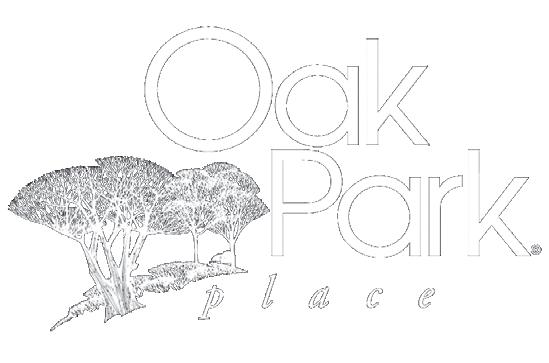

Gout is a type of arthritis that causes flares, often beginning in the big toe or a lower limb. It occurs when a high level of
serum urate builds up in the body, which then forms needle-shaped crystals in and around the joint.
Gout usually happens in middle age, with men developing it earlier than women. Some people with gout may be more likely to develop chronic kidney disease, obesity, hypertension, and diabetes.
Doctors will ask questions and perform blood tests to check for arthritis markers. A general practitioner may recommend a patient see a rheumatologist to get a better arthritis diagnosis as well as a treatment plan.
Treatments include analgesic medications, anti-inflammatory drugs that may be NSAID or steroid formulations, capsaicin creams to block pain signals, or immunosuppressants and biologics if arthritis is autoimmune in nature. Treatment may be customized to each patient.
While there’s no cure or surefire way to prevent arthritis, exercising, losing weight, managing stress, and eating healthy foods could limit symptoms. Working with a doctor also can help someone manage arthritis.

Assisted living facilities provide a vital service to families across the globe. In fact, more than 800,000 people in the United States are currently living in assisted living facilities, according to a 2023 report from Zippia, an online recruitment service that gathers information from the Bureau of Labor Statistics and its own internal data.
The decision to move oneself or an aging relative into an assisted living facility is complicated. Though such facilities typically offer an excellent standard of care, it can still be bittersweet for an individual to leave his or her home. It also can be difficult to identify when is the best time to make such a transition. Though each individual case is unique, the following are some indicators that the time might be right to move oneself or an aging loved one into an assisted living facility.
• Emotional challenges: The National Council on Aging notes that certain
emotional challenges may indicate the time is right for an individual to move into an assisted living facility. The NCOA encourages individuals making such a decision independent of others to ask themselves if they are experiencing feelings of loneliness or depression.
Assisted living facilities can provide much-needed social interaction that seniors may not be getting at home. If feelings of loneliness or depression are present, then the time might be right to make the move to an assisted living facility.
• Physical challenges: Many individuals move into assisted living facilities because the physical challenges of daily life have become too significant to handle alone. The NCOA notes that individuals who are feeling overwhelmed by tasks such as buying groceries, cooking and cleaning may benefit from moving into assisted living facilities that handle such tasks for them.
• Issues with hygiene: The presence of additional challenges related to hygiene also may suggest a move to an assisted living facility may be beneficial. Staff at assisted living facilities can help adults who are struggling to bathe, dress themselves or use a restroom on their own.
Family members can look for signs that a loved one’s personal hygiene has taken a turn for the worse. Issues with hygiene can be a byproduct of depression, and poor hygiene also can increase risk for infection
and illness.
• Injuries: The NCOA notes that falls or near-falls are another potential sign that a person can benefit from moving to an assisted living facility. Falls can hurt anyone, but they can be especially damaging to aging adults. For example, the National Institutes of Health report that falls may result in loss of independence, chronic pain and reduced quality of life.
Assisted living facilities are often equipped with features to reduce risk of falls, such as grab bars in showers and bathrooms and even along corridor walls. In addition, assisted living facilties may be housed in single-story buildings or equipped with elevators, which means residents won’t be forced to navigate potentially dangerous staircases at any point during the day.
Staff also can respond quickly if residents experience a fall, providing much-needed assistance that seniors living alone or with an aging spouse may not get at home.
Various signs may indicate that the time is right for individuals to move into an assisted living facility so they can more safely navigate daily life.
(METRO CREATIVE)
Various signs may indicate that the time is right for individuals to move into an assisted living facility so they can more safely navigate daily life.
“To All of the Wonderful People at Azura Memory Care

“To All of the Wonderful People at Azura Memory Care, We would like to thank each and every one of you for taking care of our Mom with such loving kindness and compassion. We were so blessed to have her live in such an amazing home!! We appreciate everything you all do!”
“To All of the Wonderful People at Azura Memory Care, We would like to thank each and every one of you for taking care of our Mom with such loving kindness and compassion. We were so blessed to have her live in such an amazing home!! We appreciate everything you all do!”
We would like to thank each and every one of you for taking care of our Mom with such loving kindness and compassion. We were so blessed to have her live in such an amazing home!! We appreciate everything you all do!”
We would like to thank each and every one of you for taking care of our Mom with such loving kindness and compassion. We were so blessed to have her live in such an amazing home!! We appreciate everything you all do!”
“To All of the Wonderful People at Azura Memory Care, We would like to thank each and every one of you for taking care of our Mom with such loving kindness and compassion. We were so blessed to have her live in such an amazing home!! We appreciate everything you all do!”
“To All of the Wonderful People at Azura Memory Care, We would like to thank each and every one of you for taking care of our Mom with such loving kindness and compassion. We were so blessed to have her live in such an amazing home!! We appreciate everything you all do!”
Love, Mickelson Family
Love, Mickelson Family
Love, Mickelson Family
Love, Mickelson Family
Love, Mickelson Family
Love, Mickelson Family
Love, Mickelson Family
with your loved one’s short- or long-term memory care needs.
with your loved one’s short-or long-term memory care needs.
with your loved one’s short- or long-term memory care needs.
with your loved one’s short- or long-term memory care needs.
with your loved one’s short- or long-term memory care needs.
with
What
• High Caregiver to Resident Ratio



• Exclusive MOSAIC Connections Training; a required advanced dementia and engagement education system featuring the Virtual Dementia Tour
• Personalized Life Engagement Programming; featuring MOSAIC Therapies of Cognitive Stimulation, Creativity, Exercise, Community Participation and more!
• Medication Management
• Secured Entrance and Exits
• Incontinence Care
• Behavioral Expression Management

• Electric Charting System
• On-site Beautician, Dental Care, Podiatry, Physician*, Home Health Therapies and Hospice Care

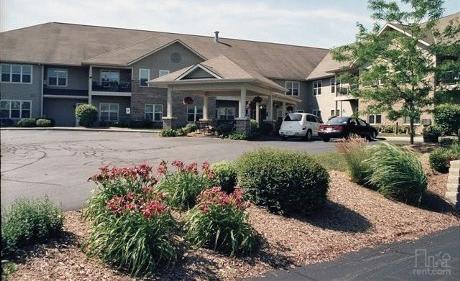

with your loved one’s short- or long-term memory care needs. Beloit
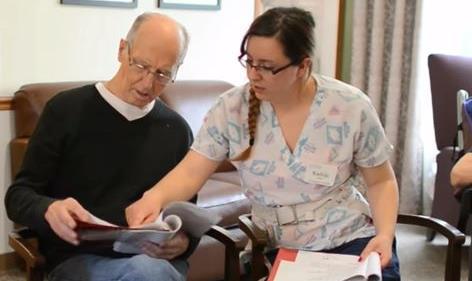


• Unique MOSAIC Dreams Program!

Growing older comes with many perks for those who are open to exploring the benefits. In addition to senior discounts on movies, meals and more, moving into one’s golden years could offer some breaks when it comes to taxes and finances.
It is always best to go over tax- and finance-related plans with an accountant or certified financial planner to figure out what is in your best interest. However, generally speaking, here are some potential age-related tax perks.
Older individuals can contribute more to employer-sponsored retirement accounts and Roth or traditional individual retirement accounts (IRAs), according to AARP.
For 2023, the contribution limit for employees who participate in 401(k) and 403(b) programs, most 457 retirement savings plans and Thrift Savings Plan through the U.S. Federal Government can increase their contributions to $22,500 — a jump of $2,000 from last year.
Those over age 50 can maximize contributions even more, up to a total of $30,000.
The Balance Money says for tax year 2023, people age 65 or older can add an
extra $1,850 to the standard deduction they’re eligible for if they are unmarried and not a surviving spouse. Those who are married and file joint returns can add $1,500.
In addition, the standard eligible deductions increased. Most older taxpayers feel the bigger standard deduction plus the extra standard deduction is more than any itemized deductions they can claim and choose this option when filing their returns.
The ability to contribute more to taxdefered retirement accounts enables older adults to reduce their taxable incomes. This, in turn, reduces the amount that needs to be spent on income taxes.
According to The Arbor Company, which oversees senior living communities, the filing threshold is the income that must be made before being required to file a tax return.

Typical taxpayers who are either employees or retired and drawing pensions or Social Security find the threshold increases over age 65.
Single filers over age 65 do not need to file returns if their incomes are $14,050 or under. Married filers over age 65 have a threshold of $27,400.
If primary or sole income comes from Social Security or a pension, those over age 65 may not have to file returns at all.
Differing from deductions, a credit for taxpayers is available to people age 65 or older or retired persons on permanent and total disability who receive taxable disability income for the tax year, according to the Internal Revenue Service. In addition, this credit is for those who have an adjusted gross income or the total of nontaxable Social Security, pensions, annuities, or disability income under specific limits.
The eligibility levels change from year to year. Credits range from $3,750 to $7,500.
These are some of the tax breaks American seniors can expect when filing their income tax returns. Speak with an accountant and financial planner about other perks that come with aging.
Individuals also can visit www.irs.gov for further information.
(METRO CREATIVE)Moving into one’s golden years could offer some breaks when it comes to taxes and finances. Seniors are advised to speak with an account to determine what tax perks they may be eligible for.
The National Institute on Aging defines Alzheimer’s disease as a brain disorder that slowly destroys memory and an individual’s ability to think. The majority of individuals diagnosed with Alzheimer’s disease are 60 and older, which can give the impression that the disorder is exclusive to the elderly. However, younger adults are not immune to the disease.
The prevalence of early-onset Alzheimer’s (sometimes referred to as “young-onset Alzheimer’s”) is unknown. However, early-onset Alzheimer’s can affect every aspect of a young person’s life.
The experts at Johns Hopkins Medicine note that Alzheimer’s disease is the most common form of dementia and it most often affects older individuals. But in rare cases individuals under 60 can develop Alzheimer’s, and Johns Hopkins notes such instances generally affect people in their 40s and 50s. Most types of early-onset Alzheimer’s disease are the same, but cases may be categorized as common or genetic.
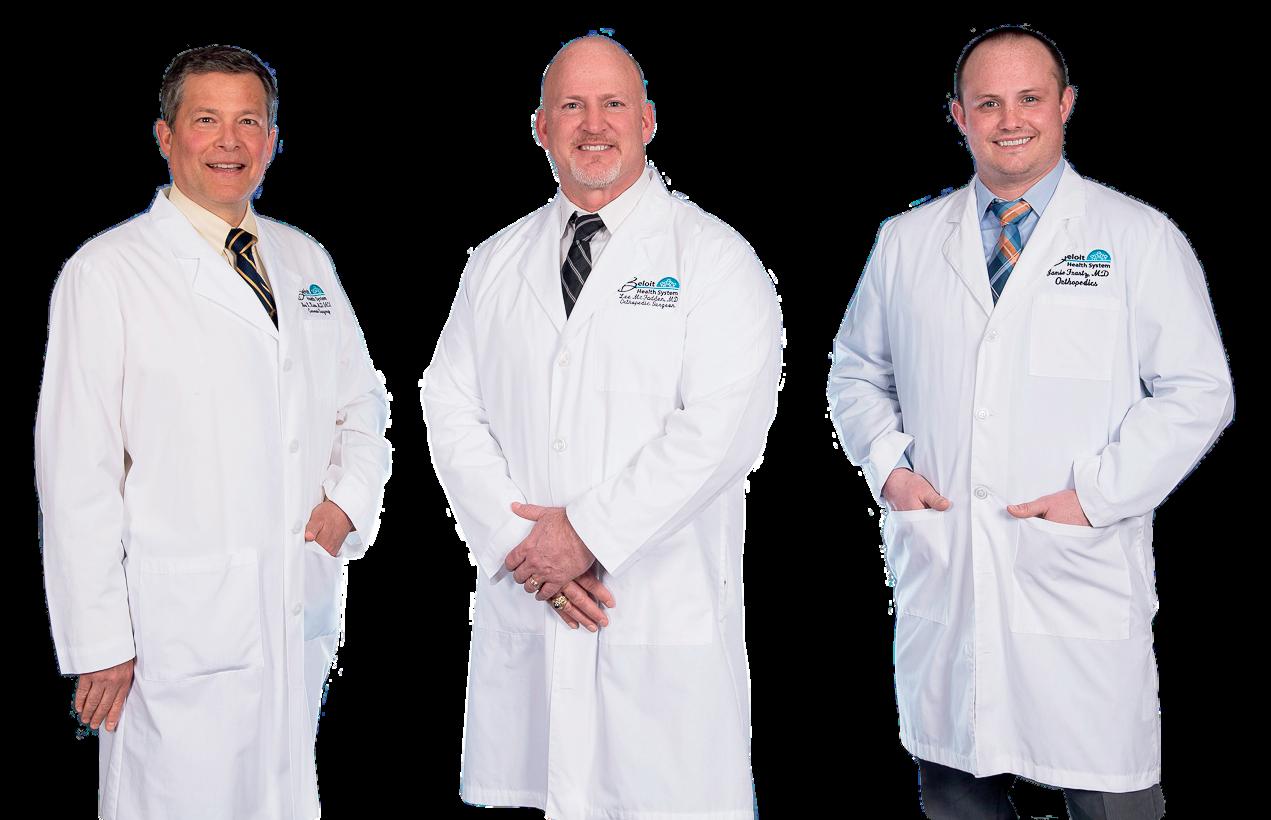


• Common: Johns Hopkins notes that most people with early-onset Alzheimer’s have the common form of the disease,
which progresses in much the same way as it does in older individuals.
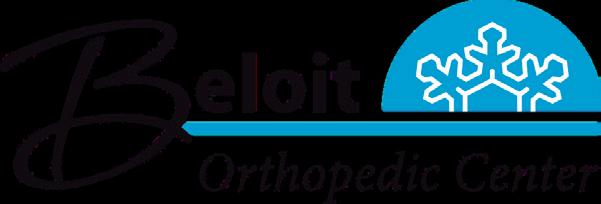
• Genetic: In rare cases, a young person may be diagnosed with genetic, or familial, Alzheimer’s. The Alzheimer’s Society notes that this is caused by genetic mutations that run in families. The risk that this mutation will be passed from parents to children is 50 percent. Individuals who develop genetic Alzheimer’s typically have lengthy family histories of the disease and may know several relatives, in addition to a parent, who were affected at a similar age.
What are the risk factors?
Though people who develop early-onset Alzheimer’s disease are most likely to be diagnosed with the common form of the condition, family history of the disease remains the only known risk factor.
What are the symptoms?
The Alzheimer’s Association notes that health care providers do not generally look for Alzheimer’s in young people, which can make the process of diagnosing the condition long and frustrating. Symptoms are often attributed to other factors, such as stress. However, Johns Hopkins reports
that the presence of these symptoms could indicate a person is in the early stages of early-onset Alzheimer’s:
• Forgetting things, particularly newly learned information or important dates
• Asking for the same information again and again
• Trouble solving basic problems, such as keeping track of bills or following a favorite recipe
• Losing track of the date or time of year
• Losing track of where you are and how you got there
• Trouble with depth perception or other vision problems
• Trouble joining conversations or finding the right word for something
• Misplacing things and not being able to retrace your steps to find it
• Increasingly poor judgment
• Withdrawal from work, social situations
• Changes in mood and personality
Symptoms such as memory loss and behavioral changes, including severe mood swings, are some of the signs that present as early-onset Alzheimer’s progresses. Early-onset Alzheimer’s is a rare disorder. But its effects can be just as significant as forms of the disease that affect older individuals.
It’s not surprising that this year’s 174th Walworth County Fair shares many traditions that have emerged since a cattle show organized by the Walworth County Agricultural Society was held in the Village of East Troy on Oct. 16, 1850.
A total of 35 first premiums, 17 second premiums, and three third premiums were awarded, and the first county fair was held in Elkhorn in 1851.
One of these proud traditions continued on Aug. 31 with the recognition of four Outstanding Senior Citizens presented with a citation from the Wisconsin State Legislature by Wisconsin State Senator Steve Nass and Wisconsin State Representative Ellen Schutt.
Receiving the citations were Mike Flick from Williams Bay, Jo Dewart from Delavan, and Dan and Cheryl Mirkes from Lake Geneva.
“It’s probably easy to go out and make a buck,” Nass told the audience of family and friends of the recipients gathered at the Park Stage. “But it’s not as easy to make a difference. We are recognizing people today that were born with the special opportunity to make a difference.”
Nass described Flick as, “An outstanding senior citizen whose presence radiates warmth and kindness to all who are fortunate enough to know him” and someone who leaves “an indelible mark of hope and encouragement wherever he goes.”
Nass cited Flick’s work with the Lakeland Community Church and especially its Celebrate Recovery Program, his service as a chaplain for the Kunes Auto Group, and his dedication to visiting and supporting inmates in the Walworth County Jail.
Noting that “Walworth County is a wonderful place to live and with great people with hearts that are wide open to helping other people,” Flick said he accepted the recognition on behalf of people in the county who help those in great need.
In an interview before the ceremony, Flick shared that learning of the recognition was “kind of amazing. I never expected it. It was a pleasant surprise.”
Having supported the Lakeland Community Church’s Celebrate Recovery Program for more than 10 years, Flick shared that the program, in fact, exists in more than 40,000 locations worldwide.
As one of 12 chaplains for 45 Kunes Auto Group dealerships, Flick said, “Sometimes people hold things in the inside that they want to talk about but don’t feel safe in talking. Everything is confidential.
People go through all sorts of things. We can be standing under a car where the oil’s being changed and praying with somebody.”
Moving to Wisconsin in 1999 after closing an advertising agency in Columbus, Ohio, Flick noted, “I’ve always believed that I would be doing something long after retirement.”
Schutt told the audience, Dewart is someone “who’s always thinking of others and how she can help.”
As examples, Schutt described Dewart’s pitching in as president of the Delavan American Legion Post 95 Auxiliary with bingo and fish fries, including cleanup duties.
Other targets for Dewart’s generous service include volunteering for the Music by the Lakes series, supporting projects of the Williams Bay United Church of Christ, being an election official for the Town of Delavan, and helping out at the Walworth County Fair Barnyard Adventure.
In short, Schutt stated, Dewart is “the one person everyone looks to for help as she is constantly doing things for others.”
Learning of her nomination for the recognition, Dewart confessed, “I thought somebody was playing a joke on me,” adding, “it’s nice honor but I do things because I like to, I like to keep busy, and I
like to help people.”
She shared spending time with her “favorite Marine” veteran with dementia so that his wife can go somewhere.
With a gentle laugh, she described her drive for helping others: “It keeps me busy, out of trouble, and I don’t spend money.”
When it came to Dan and Cheryl Mirkes, Nass highlighted their notable commitment to the Agape House and how they are “consistently there to mentor, teach, and welcome students, providing stability, love, prayer, and support to those who require assistance.”
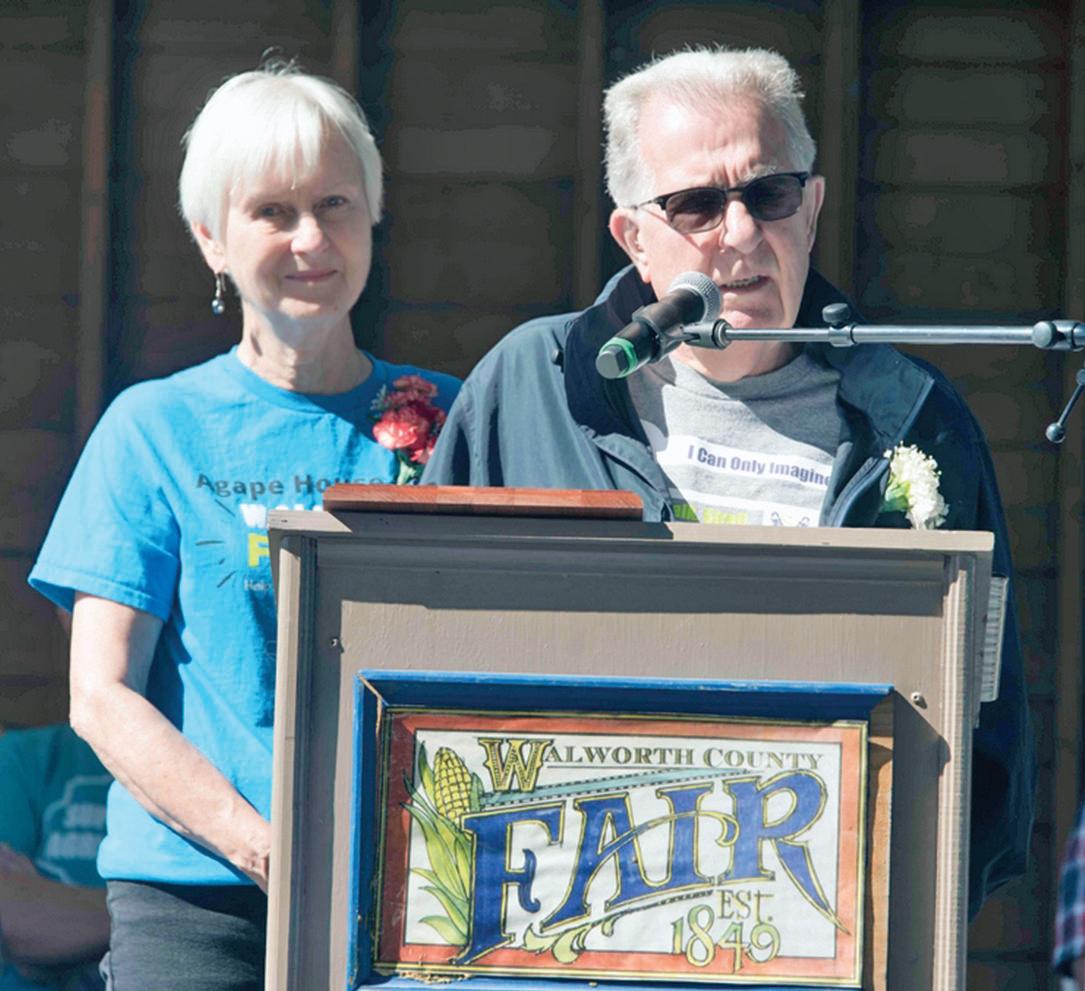
Before the presentation, Dan described the Agape House, affiliated with the Calvary Church in Williams Bay, as a ministry aimed at steering boys and girls from 12 to 18 years old back on track despite the trauma in their lives. He said, “We not only house them, but we also school them, and then we counsel them with certified counselors. We also try to zero in on their families.”
Cheryl, a registered nurse who later learned how to turn medical and patient information into an electronic format, taught computer skills to Agape House children.
Following his career in the hotel food and beverage industry, Dan taught Personal Finance at Agape House.
AmeriCorps Seniors RSVP Racine County has volunteer driver opportunities for two of our senior support programs:

MyRIDE - Volunteer Drivers providing seniors with rides to their medical appointments, grocery store, etc.

Meals on Wheels (ADRC) - Volunteer Drivers distributing meals to clients over multiple routes in Racine County.
Volunteer Benefits include mileage reimbursement and volunteer insurance.





Contact Michael O’Brien, RSVP Project Director for more information.


mobrien@volunteerracine.org
262.886.9612 x104

If you or someone you love is dealing with a serious illness, it’s important to know all of your options early - when it’s a choice, not a necessity

Nothing matters more at the end of life than having the time to say the things that need to be said, and do the things that need to be done.
medical event. It is a special opportunity to care for the with love and memories.

Many seniors want to spend as long as possible residing in the comforts of their own homes. According to AARP’s “Home and Community Preferences Survey,” more than three-quarters of U.S. adults age 50 and older prefer living at home.
But getting older often comes with certain deficits that may not make current living situations the safest for seniors.
Retirement Living reports that an older person is treated in an emergency room for a fall-related injury nearly once every 10 seconds. Falls cause millions of injuries and 32,000 deaths a year, according to the U.S. Centers for Disease Control and Prevention.
Seniors may be affected by low vision, mobility limitations, cognitive decline, balance issues, and loss of muscle strength. Certain adaptations may be necessary if seniors want to stay in their homes, particularly in older homes that have not recently been renovated.
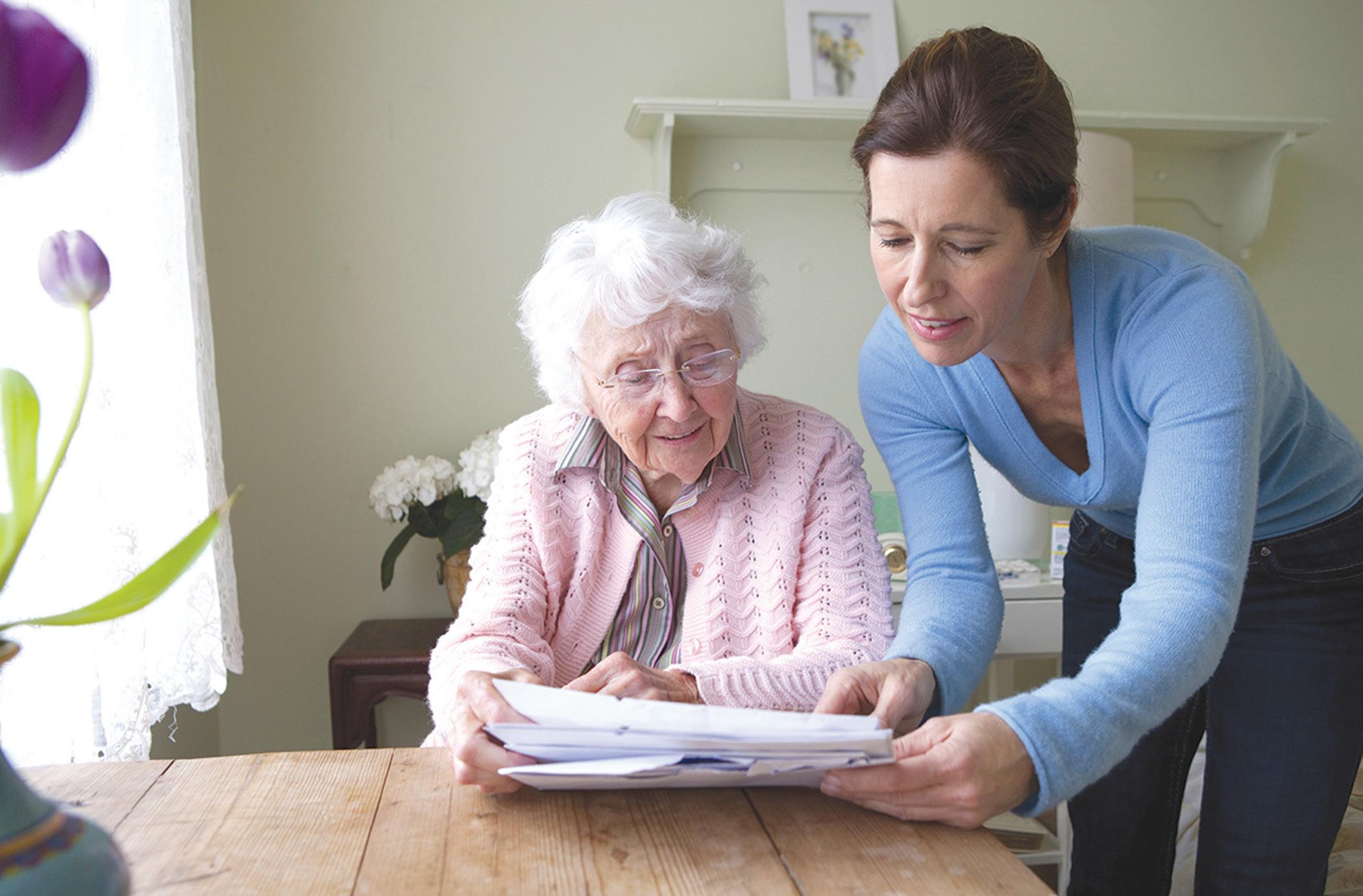
This is an easy modification. Levers are much easier for individuals with arthritis or persons who lack dexterity in their hands. Everything from doorknobs to faucet knobs can be replaced with levers.
Zero-threshold entryways, also known as flush entries, do not require crossing a lip or any raised barrier. They can appear on doorways and showers and make it easy for people who have mobility issues, as well as those using scooters, walkers and wheelchairs, to move about unencumbered.
One inexpensive modification is to remove extraneous furniture and accessories. Such a change widens walking spaces in a room and accommodates walkers and wheelchairs. In addition, furniture can be pushed to the room’s perimeter to make moving around easier. It’s also important to remove area rugs, as they’re often tripping hazards.
Minimizing falls could come down to providing support in key rooms of a home. Adding grab rails in the bathroom near the toilet and in the shower can help a person use those facilities without assistance. Install a grab rail close to seating in the kitchen to add support.
Motion-activated or darknessactivated lighting switches and fixtures can automatically turn on lights, thereby improving visibility. Also, rocker light switches are easier to maneuver than standard toggles.
Single-story homes are preferable for growing older gracefully, but many seniors live in multi-story homes. A stairlift makes a multi-floor home more accessible, according to Elder, an eldercare service provider. Stairlifts make it easier to traverse staircases and reduce the risk for falls.
These suggestions are just a few of the many home modifications that can help seniors safely age in place.
(METRO CREATIVE)Certain adaptations should be discussed, and implemented as needed, with seniors who want to stay in their homes.
People are living longer, a reality that can be traced to a number of factors, including advancements in medicine and greater dissemination of information regarding preventive health care.
According to data from the United Nations Population Division, the average life expectancy in the United States is 81.65 for women and 76.61 for men. Canada has even higher life expectancies, at 84.74 for women and 81.15 for men.
As people live longer, some may outlive their significant others and ultimately find themselves once again interested in sharing experiences with a special someone.

Seniors ready to re-enter the dating pool may find that things are quite different from what they experienced as teenagers or young adults. Dating used to be about hanging out with friends and meeting people at shared events, such as school dances or work parties or even while enjoying a night out with friends.
Nowadays, dating often begins in cyberspace. This can be confusing and anxiety-inducing for adults who didn’t grow up with technology guiding their
every move.
According to a report in The Atlantic, more than one-third of baby boomers are not currently married, and this generation has had higher rates of separation and divorce and lower rates of marriage than the generations that preceded them.
Many boomers have years ahead of them to devote to new relationships. Here’s what they may want to know before navigating twenty-first century dating waters.
While online dating may be portrayed as a young person’s game, plenty of older adults are now finding connections online.
In fact, many different dating apps are geared toward the senior set, including SeniorMatch, eHarmony, Singles50, OKCupid, and Silver Singles, among others.
As a senior, you may have more time to
devote to recreation and leisure.
This can be a great opportunity to get out and meet someone who shares your passions and interests.
While online dating apps and websites may have certain things working against them, particularly if their algorithms for pairing people are not fine-tuned, they also can be helpful.
Online dating can expand social circles beyond local neighborhoods or even states, provinces or countries. You’re casting your net over a much larger body of water.
Furthermore, dating app profiles typically spell out exactly what another person is seeking, which can save seniors from having to revisit awkward dating moments from years past.
Seniors may have to navigate new waters in modern dating. But with a good mindset and a little persistence, it is possible for seniors to find a special someone in cyberspace.
(METRO CREATIVE)Many boomers have years ahead of them to devote to new relationships. But there are things they may want to know before navigating twenty-first century dating waters.

The benefits of maintaining good credit include looking more reliable in the eyes of prospective employers and securing lower mortgage interest rates when buying a home.
Those rewards can benefit anyone, but they’re especially enticing to young people. But what about seniors? Do individuals stand to benefit significantly from maintaining good credit into their golden years?
According to the credit reporting agency Experian, senior citizens tend to have the best credit scores of any consumer demographic.
That could be a byproduct of years of financial discipline, and there are many benefits to maintaining that discipline into retirement.
Buying a home is often considered a big financial step forward for young people, but that doesn’t mean aging men and women are completely out of the real estate market.
In its 2020 “State of the Nation’s Housing” report, the Joint Center for
Housing Studies of Harvard University reported that the share of homeowners age 65 and over with housing debt doubled to 42 percent between 1989 and 2019.
In addition, 27 percent of homeowners age 80 and over were carrying mortgage debt in 2019. Maintaining strong credit after retirement can help homeowners who still have mortgage debt get better terms if they choose to refinance their mortgages.
Even seniors who have paid off their mortgages can benefit from maintaining good credit if they decide to downsize to a smaller home but cannot afford to simply buy the new home outright.
Retirement is often associated with travel, recreation and leisure. Such pursuits can be more affordable when seniors utilize rewards-based credit cards that help them finance vacations, weekend getaways and other expenses associated with traveling.
Seniors who maintain strong credit ratings into their golden years may have more access to the best travel-based rewards cards than those whose credit scores dip in retirement.
No one knows what’s around the corner, but savvy seniors recognize the importance of planning for the unknown. The COVID-19 pandemic seemingly came out of nowhere, and among its many ripple effects was the sudden job loss experienced by seniors.
The JCHS report found that 21 percent of homeowners age 65 and over had reported loss of employment income related to the pandemic.
Unforeseen medical expenses also can compromise seniors’ financial freedom. Maintaining a strong credit rating into older adulthood can help seniors navigate such financial uncertainty more smoothly.
Such a strategy can help seniors secure low-interest loans or credit cards that can help them pay down sudden, unforeseen expenses without getting into significant debt.
The importance of a strong credit rating is often emphasized to young people. However, a strong credit rating can be equally beneficial for seniors.
CREATIVE)








Exercise is a vital component of a healthy lifestyle. By making exercise part of their day-to-day routines, people of all ages, including men and women over the age of 65, can greatly improve their overall health.
The American Academy of Family Physicians notes that seniors should aspire to be as active as possible. Exercise is a great way to incorporate physical activity into your daily routine and has been linked to reduced risk for diseases such as heart disease, diabetes and osteoporosis.
Though adults with chronic illnesses may be hesitant to exercise, the AAFP notes that it’s possible for men and women who have been diagnosed with such conditions to exercise safely. In fact, the Centers for Disease Control and Prevention notes that regular physical activity is one of the most important things seniors can do for their health and can potentially prevent many health problems associated with aging.
Seniors, particularly those who have not
exercised much in the past, may not know how much exercise they need to reap the full rewards of physical activity.
Though it’s best to discuss exercise with a physician prior to beginning a new regimen, various public health agencies advise seniors to get at least 2.5 hours of moderate aerobic exercise each week.
Brisk walking is one example of moderate aerobic exercise. Seniors who want to sweat a little more when exercising can replace moderate aerobic exercise with one hour and 15 minutes of vigorous exercise, such as jogging, each week.
The CDC advises seniors to incorporate muscle-strengthening activities into their weekly fitness routines twice per week.
Lifting waits, working with resistance bands, heavy gardening, and even some forms of yoga qualify as musclestrengthening activities. Exercises that use your body weight for resistance, such as sit-ups and push-ups, also can help build strength.
Always speak with a physician before
beginning a muscle-strengthening exercise regimen and, if possible, work with a personal trainer, especially if you’re a novice.
It’s imperative that seniors recognize when to stop working out. Exercising more than is recommended by your doctor can increase the risk of illness or injury. In addition, stop exercising if any of the following symptoms appear:
• Dizziness or shortness of breath;
• Chest pain or pressure;
• Swollen joints;
• Nausea;
• Tightness in muscles or joints;
• Pain anywhere in the body; and/or
• Throbbing or burning sensations.
(METRO CREATIVE)Exercise can help seniors stay healthy and feel more energetic throughout the day. Before beginning a new regimen, they should discuss physical activity with their physicians.

